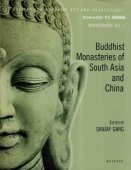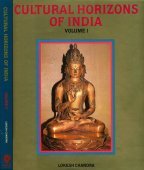Tipitaka, Tripiṭaka, Tripitaka, Tipiṭaka, Tri-pitaka: 16 definitions
Introduction:
Tipitaka means something in Buddhism, Pali, Hinduism, Sanskrit. If you want to know the exact meaning, history, etymology or English translation of this term then check out the descriptions on this page. Add your comment or reference to a book if you want to contribute to this summary article.
In Buddhism
Theravada (major branch of Buddhism)
Source: Access to Insight: A Glossary of Pali and Buddhist TermsThe Buddhist (Pali) Canon. Literally, "three baskets," in reference to the three principal divisions of the Canon: the Vinaya Pitaka (disciplinary rules); Sutta Pitaka (discourses); and Abhidhamma Pitaka (abstract philosophical treatises).Source: Dhamma Dana: Pali English GlossaryN (Basket (pitaka); three (ti)). The three baskets. Set of pali canonical texts grouping together that which Buddha has taught and the atthakathas (authoritative commentaries).
As indicated by the literal definition of the term, the tipitaka is divided between three parts: the vinaya; the suttantas; the abhidhamma. It does correspond with: The conduct; the stories (often of a metaphoric nature and explaining the practice at all levels); the theory (metaphysical section of Buddhas teaching were is expounded in details all that which does constitue reality).
Source: Buddhist Information: A Survey of Paramattha DhammasThe three Piiaka, or Tipitaka, are the three divisions of the teachings, namely: the Vinaya, Suttanta and Abhidhamma.
Theravāda is a major branch of Buddhism having the the Pali canon (tipitaka) as their canonical literature, which includes the vinaya-pitaka (monastic rules), the sutta-pitaka (Buddhist sermons) and the abhidhamma-pitaka (philosophy and psychology).
Mahayana (major branch of Buddhism)
Source: Wisdom Library: Maha Prajnaparamita SastraTripiṭaka (त्रिपिटक) refers to the “three Baskets”, according to Mahāprajñāpāramitāśāstra (chapter 3).—Accordingly, “[...] Finally a Brahmin monk named Kātyāyana, wise and of keen faculties (tīkṣnendriya), completely recited the three Baskets (tripiṭaka), the inner and outer texts (ādhyātmikabahyasūtra). Wishing to explain the words of the Buddha, he compiled the jñānaprasthānāṣṭagrantha. The first chapter (skandhaka) deals with the supreme worldly Dharmas (laukikāgradharma). Subsequently, his disciples made from it a vibhāṣā for people of ages to come who could not completely understand the Aṣṭagrantha (or Jñānaprasthāna)”.

Mahayana (महायान, mahāyāna) is a major branch of Buddhism focusing on the path of a Bodhisattva (spiritual aspirants/ enlightened beings). Extant literature is vast and primarely composed in the Sanskrit language. There are many sūtras of which some of the earliest are the various Prajñāpāramitā sūtras.
General definition (in Buddhism)
Source: Wisdom Library: BuddhismTripitaka:—The three baskets (or groups) of Theravada teachings. They are also known as the Agama sutras.
Source: Buddhist Door: GlossaryTripitaka in Sanskrit, Tipitaka in Pali. The three parts of Pali canon, consisting of: 1. Sutra Pitika (Sanskrit) or Sutta Pitaka (Pali), or the Sutra Basket - containing the entire , the sermons attributed to the Shakyamuni Buddha. 2. Vinaya Pitika (both Sanskrit and Pali), or the Ordinance Basket - containing the rules of monastic life. 3. Abhidharma Pitika (Sanskrit) or Abhidhamma Pitaka (Pali), or Shastras, or the Treatise Basket - containing the doctrinal commentaries, philosophical and technical works, such as discourses, discussions, or treatises on the dogma, doctrines, etc. Source: Amaravati: GlossaryLiterally hree baskets - the colections of the Buddhist scriptures, classified according to Sutta (Discourses), Vinaya (Discipline or Training) and Abhidhamma (Meta physics)
Source: Shambala Publications: GeneralTripitaka (Tripitaka) Skt. (Pali, Tipitaka), lit., “Three Baskets”; canon of Buddhist scriptures, consisting of three parts: the Vinaya-Pitaka, the Sūtra-pitaka, and the Abhidharma-pitaka. The first “basket” contains accounts of the origins of the Buddhist sangha as well as the rules of discipline regulating the lives of monks and nuns. The second is composed of discourses said to have come from the mouth of Buddha or his immediate disciples and is arranged into five “collections”: Dīgha-nikāya, Majjhima-nikāya, Samyutta-nikāya, Anguttara-nikāya, Khuddaka-nikāya. The third part is a compendium of Buddhist psychology and philosophy.
The Vinaya-Pitaka contains some of the oldest parts of the canon, which originated in the first decades after the death of the Buddha. After the split into individual schools, the Abhidharma-pitaka, which differs from school to school, was added.
Source: WikiPedia: BuddhismTripiṭaka (Pali: Tipitaka) is a Sanskrit word meaning Three Baskets. It is the traditional term used by Buddhist traditions to describe their various canons of scriptures. The expression Three Baskets originally referred to three receptacles containing the scrolls on which the Buddhist scriptures were originally preserved.[citation needed] Hence, the Tripiṭaka traditionally contains three "baskets" of teachings: a Sūtra Piṭaka (Sanskrit; Pali: Sutta Pitaka), a Vinaya Piṭaka (Sanskrit & Pali) and an Abhidharma Piṭaka (Sanskrit; Pali: Abhidhamma Piṭaka).
Tripitaka is the three main categories of texts that make up the Buddhist canon.
- Sutras: These are mainly teachings and sermons of Buddha originally transcribed in Sanskrit or Pali. They may contain descriptions of Buddha and parables which may help lead to enlightenment of the reader.
- Abhidharma: Philosophical and psychological discourse and interpretation of Buddhist doctrine.
- Vinaya: Rules and regulation of monastic life that range from dress code and dietary rules to prohibition in personal conduct.
The term Tripiṭaka had tended to become synonymous with Buddhist scriptures, and thus continued to be used for the Chinese and Tibetan collections, although their general divisions do not match a strict division into three piṭakas. In the Chinese tradition, the texts are classified in a variety of ways, most of which have in fact four or even more piṭakas or other divisions.
The Chinese form of Tripiṭaka, "sānzàng" (三藏), was sometimes used as an honorary title for a Buddhist monk who has mastered the teachings of the Tripiṭaka. In Chinese culture this is notable in the case of the Tang Dynasty monk Xuanzang, whose pilgrimage to India to study and bring Buddhist text back to China was portrayed in the novel Journey to the West as "Tang Sanzang" (Tang Dynasty Tripiṭaka Master). Due to the popularity of the novel, the term "sānzàng" is often erroneously understood as a name of the monk Xuanzang. One such screen version of this is the popular 1979 Monkey (TV series).
Languages of India and abroad
Pali-English dictionary
Source: BuddhaSasana: Concise Pali-English Dictionarytipiṭaka : (nt.) the 3 divisions of the Buddhist Canon.

Pali is the language of the Tipiṭaka, which is the sacred canon of Theravāda Buddhism and contains much of the Buddha’s speech. Closeley related to Sanskrit, both languages are used interchangeably between religions.
Sanskrit dictionary
Source: DDSA: The practical Sanskrit-English dictionaryTripiṭaka (त्रिपिटक).—the 3 collections of Buddhistic sacred writings (sutta, vinaya and abhidhamma).
Derivable forms: tripiṭakam (त्रिपिटकम्).
Tripiṭaka is a Sanskrit compound consisting of the terms tri and piṭaka (पिटक).
Source: Cologne Digital Sanskrit Dictionaries: Edgerton Buddhist Hybrid Sanskrit DictionaryTripiṭaka (त्रिपिटक).—(1) nt. (= Pali id.), the ‘three baskets’, the Buddhist canon: Mahāvyutpatti 1411; (2) m., = tripiṭa (1): Divyāvadāna 54.15.
Source: Cologne Digital Sanskrit Dictionaries: Cappeller Sanskrit-English DictionaryTripiṭaka (त्रिपिटक).—[neuter] the three baskets (i.e. collections of Buddhistic writings).
Source: Cologne Digital Sanskrit Dictionaries: Monier-Williams Sanskrit-English Dictionary1) Tripiṭaka (त्रिपिटक):—[=tri-piṭaka] [from tri] n. the 3 baskets or collections of sacred writings (Sūtra-, Vinaya-, and Abhidharma-piṭaka), [Buddhist literature]
2) [v.s. ...] mfn. = ṭa, [Divyāvadāna ii, 575.]
[Sanskrit to German]
Sanskrit, also spelled संस्कृतम् (saṃskṛtam), is an ancient language of India commonly seen as the grandmother of the Indo-European language family (even English!). Closely allied with Prakrit and Pali, Sanskrit is more exhaustive in both grammar and terms and has the most extensive collection of literature in the world, greatly surpassing its sister-languages Greek and Latin.
Kannada-English dictionary
Source: Alar: Kannada-English corpusTripiṭaka (ತ್ರಿಪಿಟಕ):—[noun] 'a collection of scriptures originally recorded from oral traditions in the first century B.C., divided into one of three parts (Pitaka): sermons (Sutta Pitaka), the rules of the Buddhist order (Vinaya Pitaka), and several treatises on philosophy and psychology (Abhidhamma Pitaka); Pali canon; Tripitaka.'
Kannada is a Dravidian language (as opposed to the Indo-European language family) mainly spoken in the southwestern region of India.
See also (Relevant definitions)
Starts with: Tipitakalankara, Tipitakapali.
Full-text (+67): Pitaka, Sutrapitaka, Abhidhamma, Taishō Tripitaka, Tiripitakam, Pitak, Sutta, Pali, Geyya, Summa, Abhayagiri, Veyyakarana, Pariyattidhamma, Suttapitaka, Untranslated Terms, Fifth Buddhist Council, Suttanta, Gatha, Atthakatha, Ambilahara Vihara.
Relevant text
Search found 78 books and stories containing Tipitaka, Tripiṭaka, Tripitaka, Tipiṭaka, Tri-pitaka, Tri-piṭaka; (plurals include: Tipitakas, Tripiṭakas, Tripitakas, Tipiṭakas, pitakas, piṭakas). You can also click to the full overview containing English textual excerpts. Below are direct links for the most relevant articles:
Philosophy of language in the Five Nikayas (by K.T.S. Sarao)
2. The Buddhist Pāli Tipiṭaka (Introduction) < [Chapter 1 - Introduction]
2.3. The Third Buddhist Council < [Chapter 1 - Introduction]
8. Conclusion < [Chapter 1 - Introduction]
Maha Prajnaparamita Sastra (by Gelongma Karma Migme Chödrön)
Story of the trick of the Kaśmirian < [Chapter XXIV - The Virtue of Patience]
First aṅga (member): Sūtra < [Part 2 - Hearing the twelve-membered speech of the Buddha]
Eighth aṅga (member): Ityuktaka (sayings) and Itivṛttaka < [Part 2 - Hearing the twelve-membered speech of the Buddha]
Bhesajjakkhandhaka (Chapter on Medicine) (by Hin-tak Sik)
Medicines (e): Fruits (Phala) < [Chapter 4 - Medicinal Substances in the Chapter on Medicine]
(a) The Vinaya Piṭaka < [Chapter 2 - Background Information]
Mahayana Buddhism and Early Advaita Vedanta (Study) (by Asokan N.)
Buddhist Education in Thailand (critical study) (by Smitthai Aphiwatamonkul)
6. Thai Sangha’s Education in Thailand: Historical Background < [Chapter 2 - The Thai Sangha System of Education]
6.4. Ratanakosin Period < [Chapter 2 - The Thai Sangha System of Education]
6.3. Dhonburi Period < [Chapter 2 - The Thai Sangha System of Education]
Guide to Tipitaka (by U Ko Lay)
Related products

